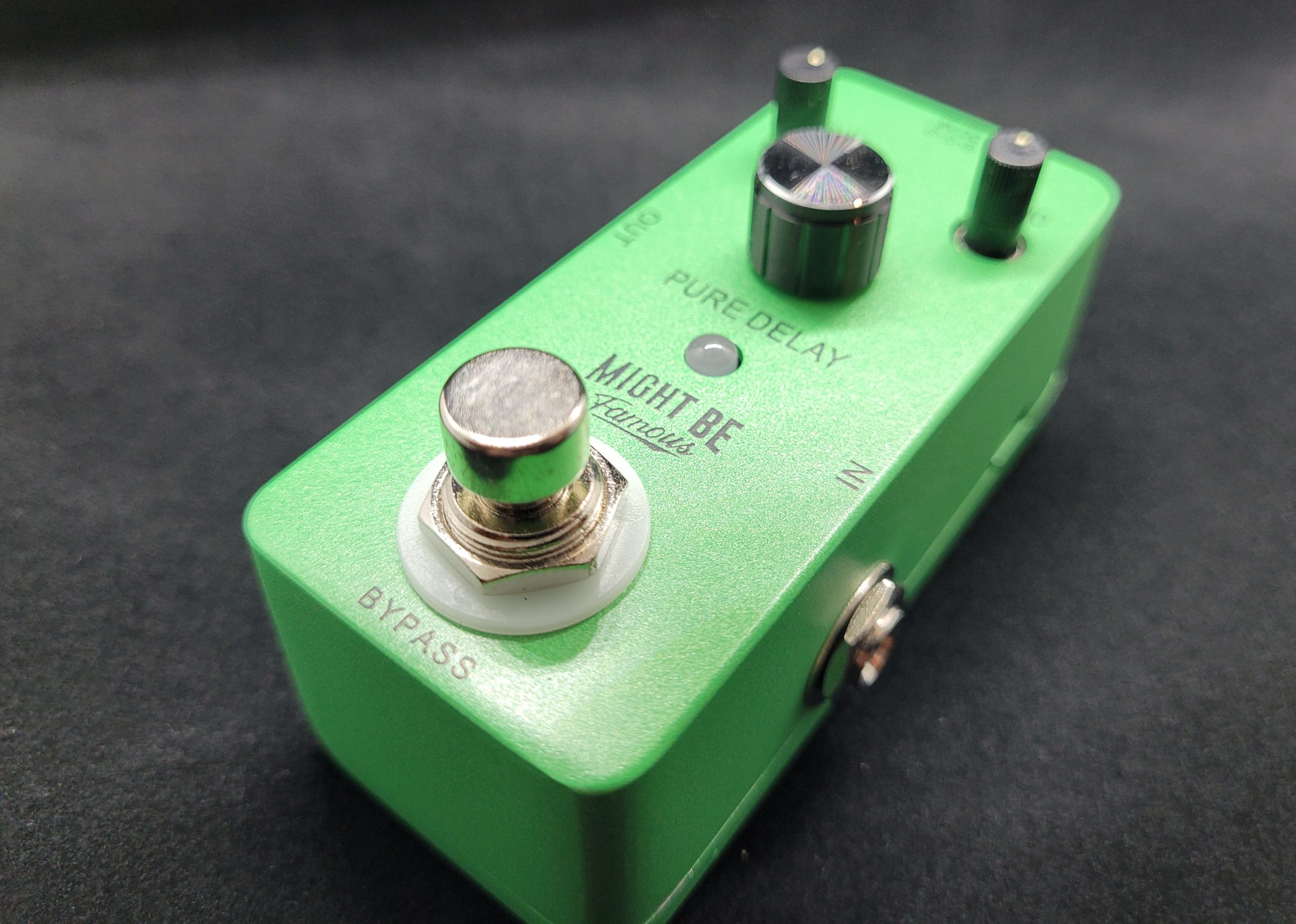It’s a game-changer for many players and yet so many new to intermediate guitarists simply overlook this FX or don’t know how to properly use it in their rig. A delay pedal can have a very versatile effect. You can do incredible things just like famous guitar players such as Eddie Van Halen, David Gilmour, The Edge, U2, Pink Floyd, and countless others. In fact, some players like Eddie Van Halen would have two delay pedals running at the same time, both with different setting. This is what some refer to as pedal stacking, where you combine two or more pedal sounds at once.
What is a Delay Pedal?
Simply put, a delay pedal records and then plays back whatever signal it received. Playbacks are typically very fast, a matter of milliseconds. In some rigs you will find two delay pedals that are set to different settings. Using one or more of these pedals can help to create atmospheric landscapes by producing cascading walls of sound.
How Do Delay Pedals Sound?
The sound of a delay pedal is among the most famous and easy to recognize. Think of a note being played once by the guitarist then repeated quickly several times. Not all deal pedals are that simple though. There are a number of different types all offering different options and tonal variety. Depending on the type of delay pedal you purchase and the setting you choose on your pedal the sound can become similar to:
- An echo effect
- A chorus/vibrato
- A compressor that provides a boosted sound
- A reverse tape played backward (only certain delays offer this feature)
- TA tremolo simulation of rapid volume fluctuations
How It Works
There are extensive settings for delay pedals, depending on the brand and model. However, some parameters are very common. They can include:
Delay time: there is hardly a better parameter to start with when dialing in your tone. The wait duration (how long it takes to replay the signal) of the guitar pedal is controlled by “delay time.” Some delays are very short, about 50 milliseconds, while others are close to twenty times longer, about 800 milliseconds. The latter is perfect for creating canon effects (replaying a line of music on itself in-between beats) while the former is perfect for the immediate “slapback” effect.
Effect level: typically, an unprocessed signal is called “dry” while the processed one is called “wet.” The effect level determines how much of the processed delay signal (wet) eventually makes it through the signal chain. A wholly wet signal will be produced if the effect knob is turned all the way up. This can be a very great trippy effect to have but could overwhelm the song structure of any tune easily.
Feedback: delayed sounds can be returned into the signal chain (for continuous repetition) by most delay pedals. Once the Feedback knob is turned up, there will be a pouring out of cascades of delay from the amplifier. The usage of this parameter must be a prudent one, striking an excellent balance. Without feedback, a delay tone can be very boring but too much feedback can as well turn your output to utter chaos. Such output can hardly be used when playing with other musicians.
Types of Delay
Echo Delay: the term Tape Echo begins in the 1950s. A tape machine was used to record a portion of a guitar signal and then play it back. The many physical moving parts of the Tape Echo machine usually cause sound inconsistencies and increase the tendency of it breaking down hence can be very unreliable. Other issues of these machines are deterioration and warping. These problems are eliminated in modern pedals yet the vintage sound of the Tape machine by some FX manufacturers can be closely emulated.
Analog Delay: the ability to get a delay sound from a chip without any moving parts was first made possible by BBD (bucket brigade chip). It works by sending the analog signal via a series of capacitors. It is done a step per clock cycle just like transferring things from one point to the other. A key limitation here is how much of the signal is lost per cycle hence affecting the repeats are limited. Also, there could be a limitation on the time duration between delay repeats. They are however very popular because of the tendency of the repeats to get darker with each repeat.
Digital Delay: this type of delay is quite complicated as it entails the use of an analog-to-digital converter subjected to multiple digital signal processors. The recorded signal is played from the storage buffer depending on the settings of the parameters. DSP (Digital Signal Processor) is the chip used in digital delays. The time extension between repeats is better analogs. The repeats are also 100% the same as the initial note, giving you an accurate replication of the tune played in.
Top Delay Pedals
There is a wide range of delay pedals in the market, covering different sonic needs and price ranges. Ultimately, the best delay pedal for you is the one that covers your sonic needs within your budget. Some of the best options in the market are:
Boss DD-7 or DD-3
Boss is a very popular guitar pedal brand, being the first to make both Analogue and digital pedals. Today, they have numerous options in the market. DD-7 was launched in 2008, offering multiple modes of digital delay, an analog delay simulation, a tap tempo, a modulation effect, and a reverse tape loop simulation. DD-500 is the premium model for people with higher budgets. Another option, and a favorite of ours is the DD-3, which continues to be used by a number of well known artists.
Might Be Famous Pure Delay
If you’re looking for an Echo Delay pedal the Pure Delay pedal by our very own Might Be Famous brand offers everything you want and wrapped up in a small package. This micro pedal doesn’t take up much room on your pedal board but still offers all the tonal variations needed to dial in a wide range of warmer tones. This pedal is built rock solid, uses a simple circuitry, and is an analog pedal.
Strymon TimeLine
It is somewhere between DD-7 and DD-500 – not particularly compact nor very budget-friendly. It offers numerous options including nine onboard dials and packs in 12 delay matches into the unit.
MXR Carbon Copy
This is a simpler guitar pedal than the two above. It is an analog delay that offers a straightforward sound. There are only three dials, similar to the Pure Delay pedal mentioned above, and are relatively inexpensive.
Continue Exploring
Read our guide on how to set-up your pedalboard.
If you enjoyed this guide on delay pedals be sure to also read our buying guide on Fuzz pedals.

